Abstract
In a prospective study of 92 children with at least one atopic parent, the development of the specific antibody responses to food and inhalant allergens during the first 5 years of life were assessed. By the radioallergosorbent test egg specific IgE antibody occurred in about 30% of the children with the mean peak concentration at 12 months. By the second year the prevalence of this antibody had increased whereas the mean concentration had decreased. Milk specific IgE antibody could not be shown in any subject, including four whose skin tests yielded positive results. Food specific IgG antibody was noted by antigen binding radioimmunoassays at 3 months in most children. These responses had peaked and began to fall by the fifth year. In contrast few children had detectable IgE or IgG antibody to inhalant allergens before the first 2 years of life. Both the concentration and prevalence of specific antibody, however, increased from the second to the fifth year and was greater in children whose skin tests yielded positive results. Breast feeding was associated with an increase in the prevalence of positive results from skin tests but was not associated with detectable IgE antibody to both food proteins, a lower concentration of IgG antibody to cows' milk, and was not associated with protection against the development of disease. A high level of exposure to dust mite was associated with an increased prevalence of positive results from skin tests to dust mite and appreciably higher antibody concentration. This study indicates differences in the humoral responses to food and inhalant allergens. Environmental factors appear to influence the development of these responses.
Full text
PDF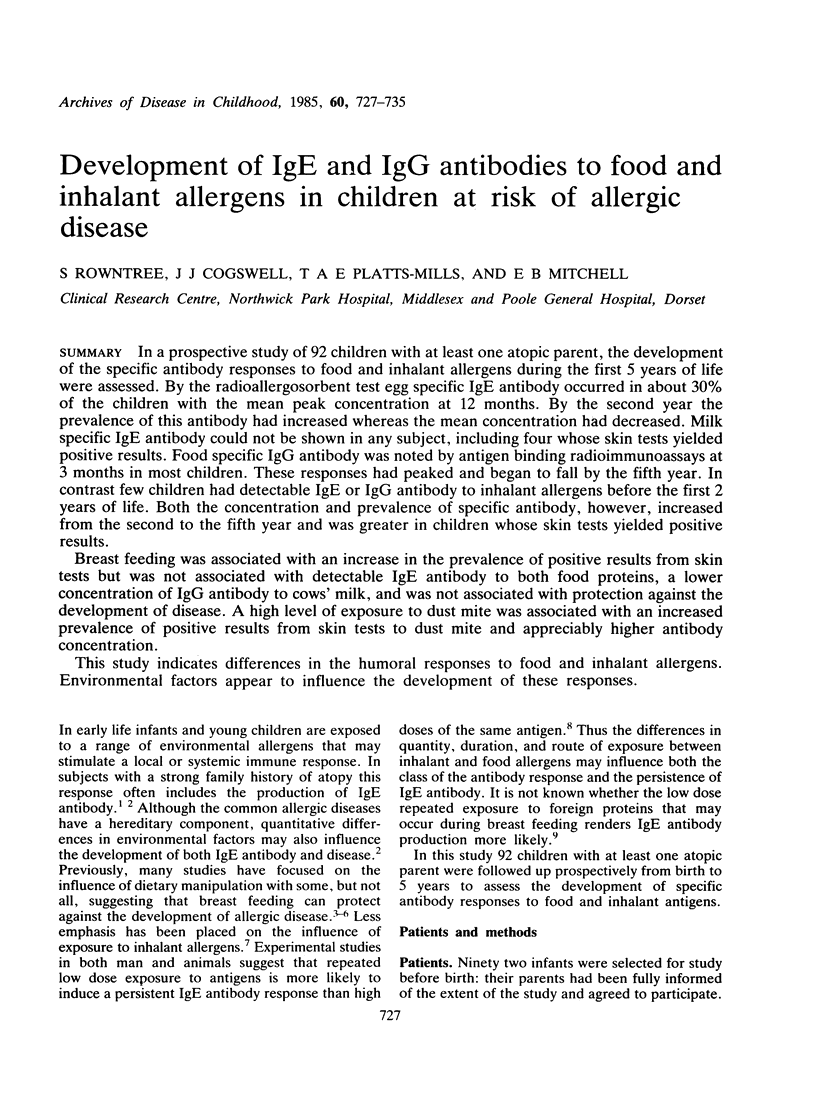
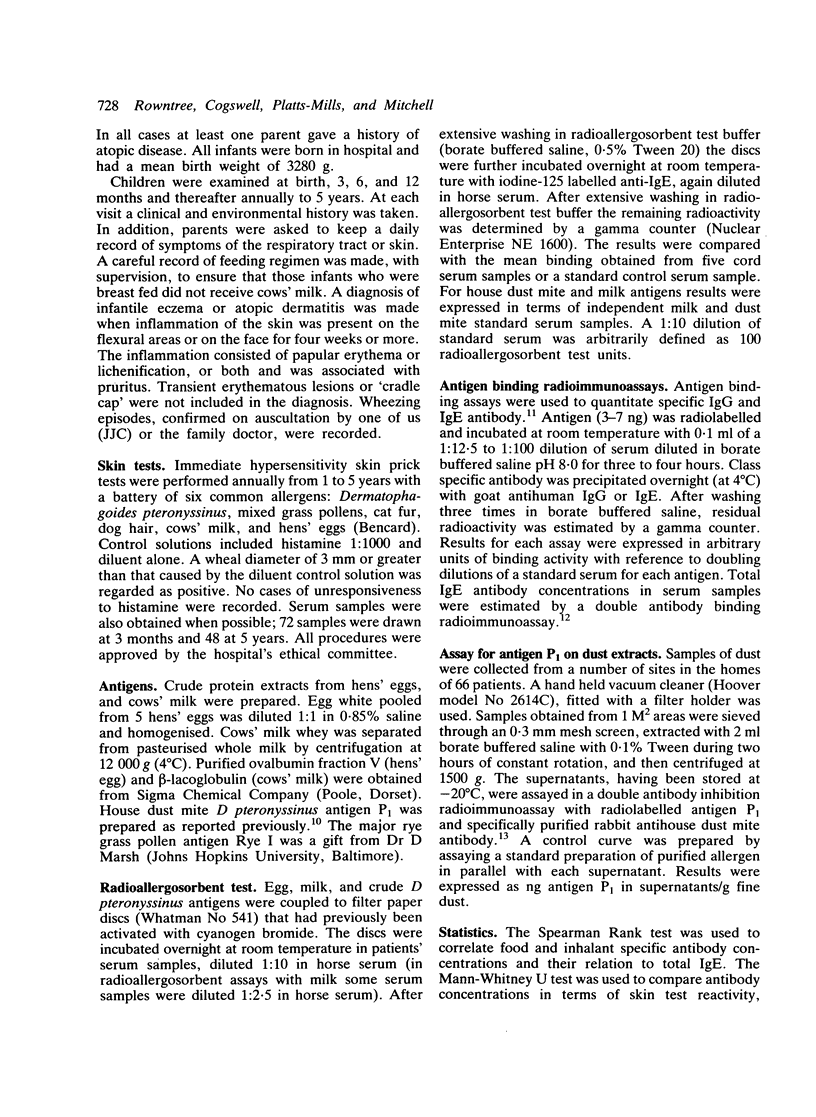
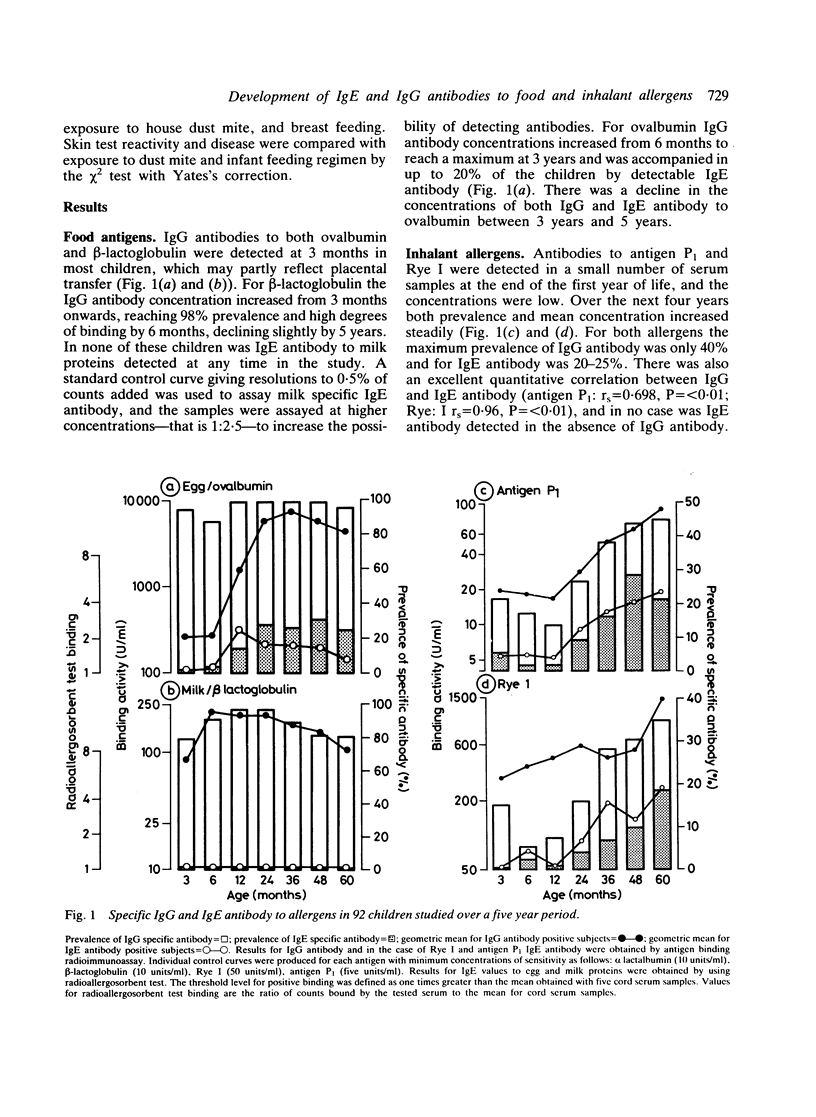
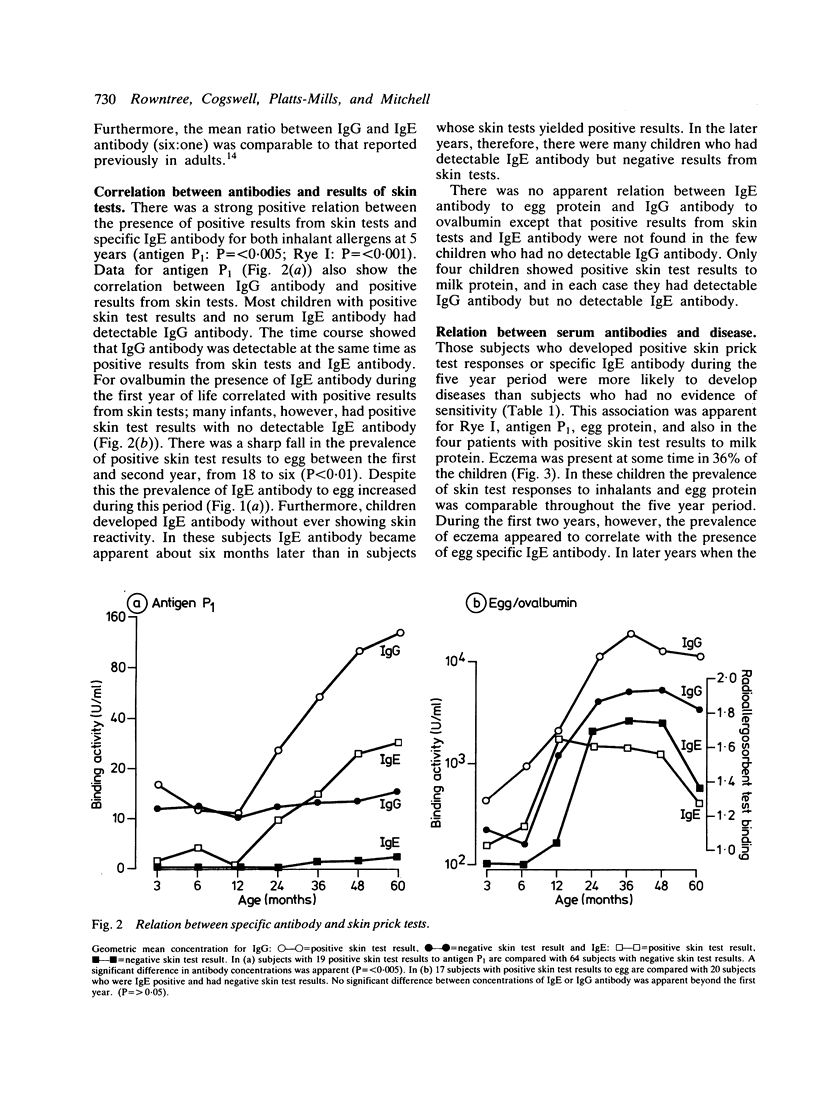
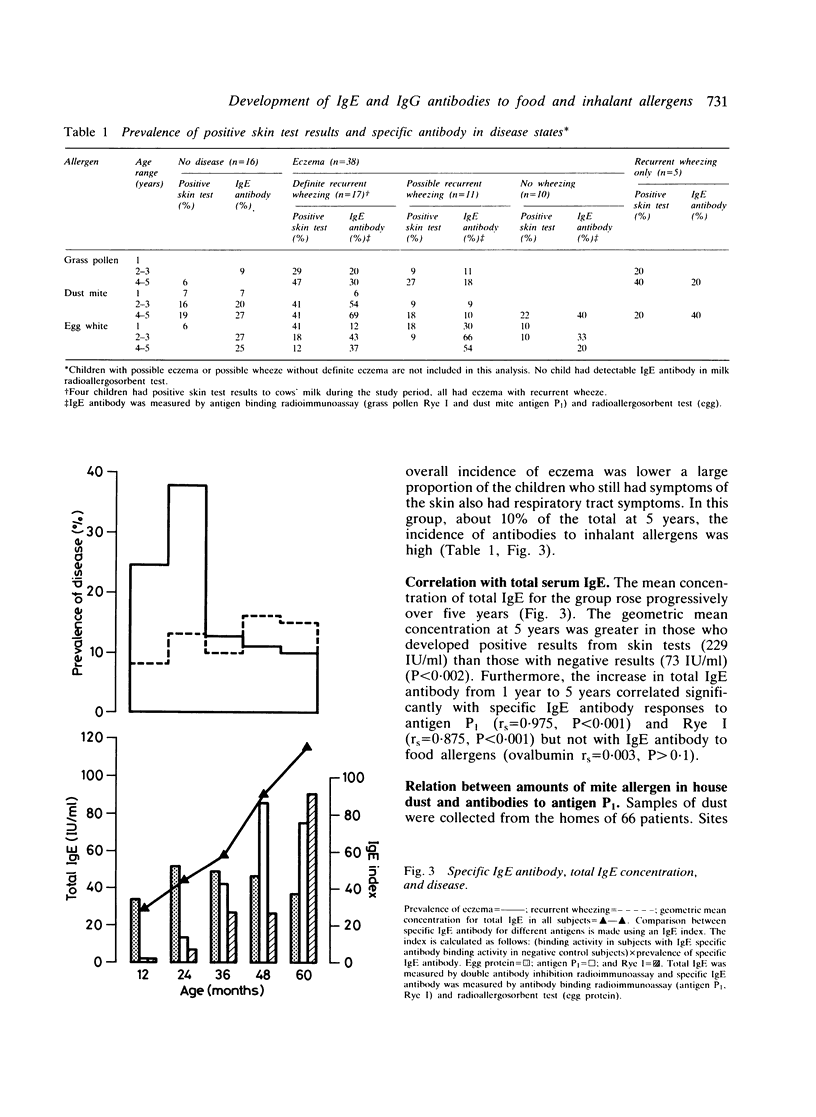

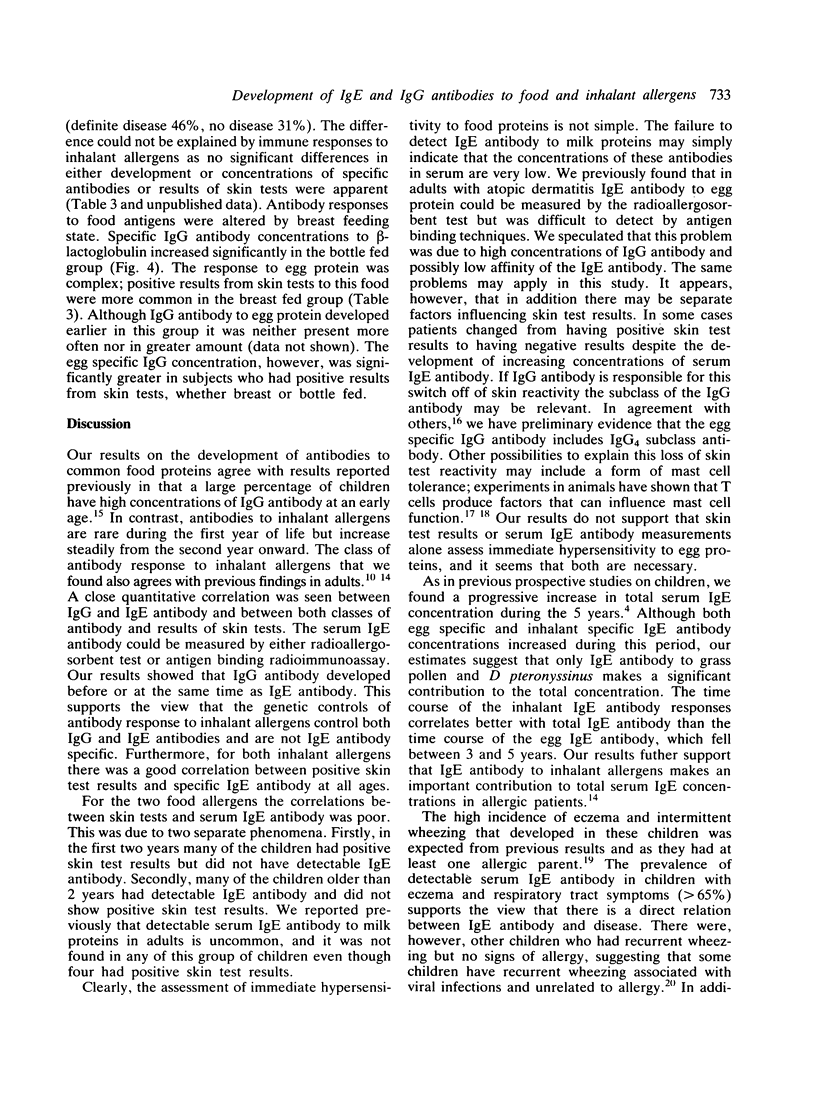
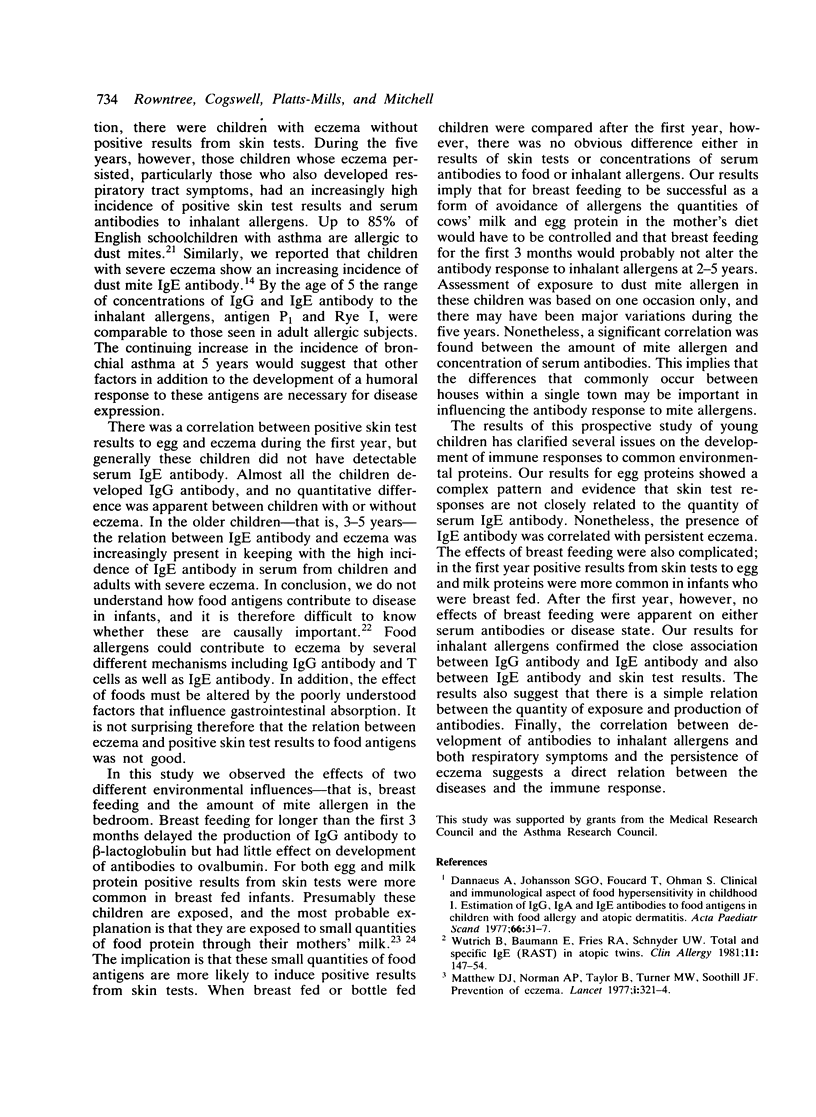
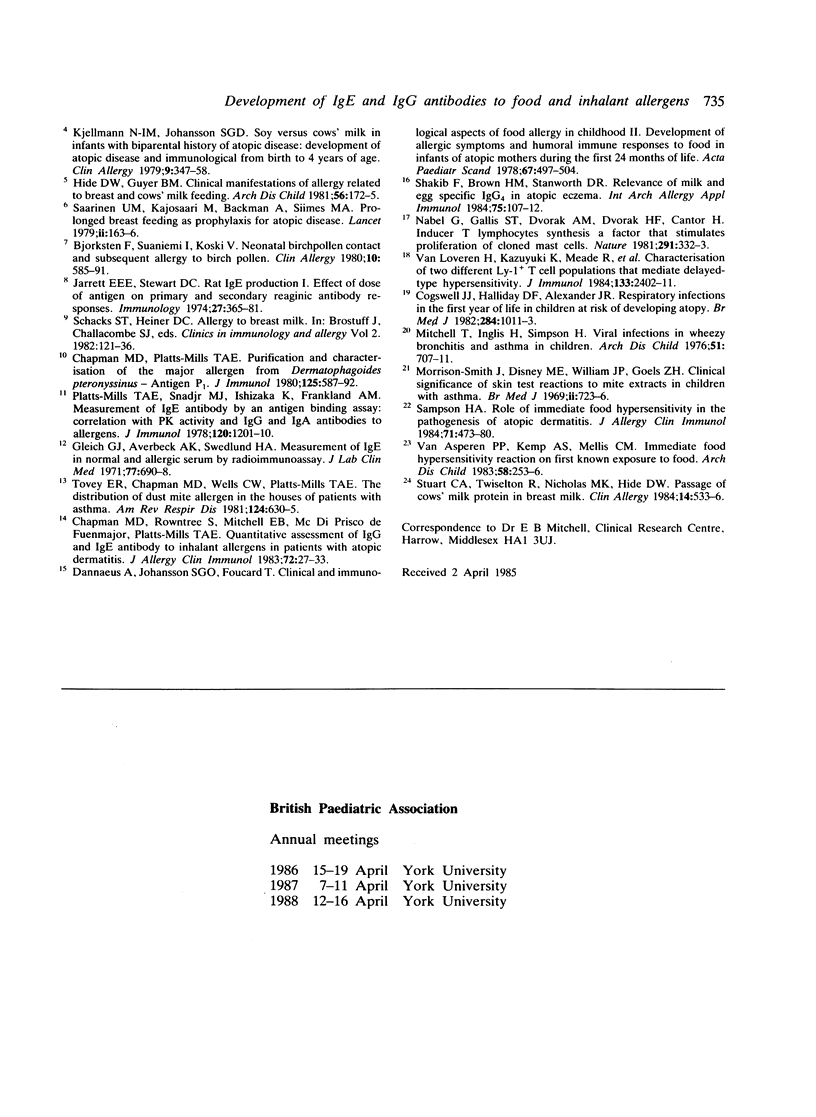
Selected References
These references are in PubMed. This may not be the complete list of references from this article.
- Björkstén F., Suoniemi I., Koski V. Neonatal birch-pollen contact and subsequent allergy to birch pollen. Clin Allergy. 1980 Sep;10(5):585–591. doi: 10.1111/j.1365-2222.1980.tb02140.x. [DOI] [PubMed] [Google Scholar]
- Chapman M. D., Platts-Mills T. A. Purification and characterization of the major allergen from Dermatophagoides pteronyssinus-antigen P1. J Immunol. 1980 Aug;125(2):587–592. [PubMed] [Google Scholar]
- Chapman M. D., Rowntree S., Mitchell E. B., Di Prisco de Fuenmajor M. C., Platts-Mills T. A. Quantitative assessments of IgG and IgE antibodies to inhalant allergens in patients with atopic dermatitis. J Allergy Clin Immunol. 1983 Jul;72(1):27–33. doi: 10.1016/0091-6749(83)90048-9. [DOI] [PubMed] [Google Scholar]
- Cogswell J. J., Halliday D. F., Alexander J. R. Respiratory infections in the first year of life in children at risk of developing atopy. Br Med J (Clin Res Ed) 1982 Apr 3;284(6321):1011–1013. doi: 10.1136/bmj.284.6321.1011. [DOI] [PMC free article] [PubMed] [Google Scholar]
- Dannaeus A., Johansson S. G., Foucard T. Clinical and immunological aspects of food allergy in childhood. II. Development of allergic symptoms and humoral immune response to foods in infants of atopic mothers during the first 24 months of life. Acta Paediatr Scand. 1978 Jul;67(4):497–504. doi: 10.1111/j.1651-2227.1978.tb16360.x. [DOI] [PubMed] [Google Scholar]
- Dannaeus A., Johansson S. G., Foucard T., Ohman S. Clinical and immunological aspects of food allergy in childhood. I. Estimation of IgG, IgA and IgE antibodies to food antigens in children with food allergy and atopic dermatitis. Acta Paediatr Scand. 1977 Jan;66(1):31–37. doi: 10.1111/j.1651-2227.1977.tb07803.x. [DOI] [PubMed] [Google Scholar]
- Gleich G. J., Averbeck A. K., Swedlund H. A. Measurement of IgE in normal and allergic serum by radioimmunoassay. J Lab Clin Med. 1971 Apr;77(4):690–698. [PubMed] [Google Scholar]
- Hide D. W., Guyer B. M. Clinical manifestations of allergy related to breast and cows' milk feeding. Arch Dis Child. 1981 Mar;56(3):172–175. doi: 10.1136/adc.56.3.172. [DOI] [PMC free article] [PubMed] [Google Scholar]
- Jarrett E. E., Stewart D. C. Rat IgE production. I. Effect of dose of antigen on primary and secondary reaginic antibody responses. Immunology. 1974 Sep;27(3):365–381. [PMC free article] [PubMed] [Google Scholar]
- Kjellman N. I., Johansson S. G. Soy versus cow's milk in infants with a biparental history of atopic disease: development of atopic disease and immunoglobulins from birth to 4 years of age. Clin Allergy. 1979 Jul;9(4):347–358. doi: 10.1111/j.1365-2222.1979.tb02493.x. [DOI] [PubMed] [Google Scholar]
- Matthew D. J., Taylor B., Norman A. P., Turner M. W. Prevention of eczema. Lancet. 1977 Feb 12;1(8007):321–324. doi: 10.1016/s0140-6736(77)91131-x. [DOI] [PubMed] [Google Scholar]
- Mitchell I'Inglis H., Inglis H., Simpson H. Viral infection in wheezy bronchitis and asthma in children. Arch Dis Child. 1976 Sep;51(9):707–711. doi: 10.1136/adc.51.9.707. [DOI] [PMC free article] [PubMed] [Google Scholar]
- Nabel G., Galli S. J., Dvorak A. M., Dvorak H. F., Cantor H. Inducer T lymphocytes synthesize a factor that stimulates proliferation of cloned mast cells. Nature. 1981 May 28;291(5813):332–334. doi: 10.1038/291332a0. [DOI] [PubMed] [Google Scholar]
- Platts-Mills T. A., Snajdr M. J., Ishizaka K., Frankland A. W. Measurement of IgE antibody by an antigen-binding assay: correlation with PK activity and IgG and IgA antibodies to allergens. J Immunol. 1978 Apr;120(4):1201–1210. [PubMed] [Google Scholar]
- Saarinen U. M., Kajosaari M., Backman A., Siimes M. A. Prolonged breast-feeding as prophylaxis for atopic disease. Lancet. 1979 Jul 28;2(8135):163–166. doi: 10.1016/s0140-6736(79)91432-6. [DOI] [PubMed] [Google Scholar]
- Sampson H. A. Role of immediate food hypersensitivity in the pathogenesis of atopic dermatitis. J Allergy Clin Immunol. 1983 May;71(5):473–480. doi: 10.1016/0091-6749(83)90464-5. [DOI] [PubMed] [Google Scholar]
- Shakib F., Brown H. M., Stanworth D. R. Relevance of milk- and egg-specific IgG4 in atopic eczema. Int Arch Allergy Appl Immunol. 1984;75(2):107–112. doi: 10.1159/000233599. [DOI] [PubMed] [Google Scholar]
- Smith J. M., Disney M. E., Williams J. D., Goels Z. A. Clinical significance of skin reactions to mite extracts in children with asthma. Br Med J. 1969 Jun 21;2(5659):723–726. doi: 10.1136/bmj.2.5659.723. [DOI] [PMC free article] [PubMed] [Google Scholar]
- Stuart C. A., Twiselton R., Nicholas M. K., Hide D. W. Passage of cows' milk protein in breast milk. Clin Allergy. 1984 Nov;14(6):533–535. doi: 10.1111/j.1365-2222.1984.tb02240.x. [DOI] [PubMed] [Google Scholar]
- Tovey E. R., Chapman M. D., Wells C. W., Platts-Mills T. A. The distribution of dust mite allergen in the houses of patients with asthma. Am Rev Respir Dis. 1981 Nov;124(5):630–635. doi: 10.1164/arrd.1981.124.5.630. [DOI] [PubMed] [Google Scholar]
- Van Loveren H., Kato K., Meade R., Green D. R., Horowitz M., Ptak W., Askenase P. W. Characterization of two different Ly-1+ T cell populations that mediate delayed-type hypersensitivity. J Immunol. 1984 Nov;133(5):2402–2411. [PubMed] [Google Scholar]
- Wüthrich B., Baumann E., Fries R. A., Schnyder U. W. Total and specific IgE (RAST) in atopic twins. Clin Allergy. 1981 Mar;11(2):147–154. doi: 10.1111/j.1365-2222.1981.tb01578.x. [DOI] [PubMed] [Google Scholar]
- van Asperen P. P., Kemp A. S., Mellis C. M. Immediate food hypersensitivity reactions on the first known exposure to the food. Arch Dis Child. 1983 Apr;58(4):253–256. doi: 10.1136/adc.58.4.253. [DOI] [PMC free article] [PubMed] [Google Scholar]


